Introduction
Food recalls due to contamination or equipment failure can cost companies millions and erode customer trust. For food industry pros and regulators, maintaining hygiene and safety isn’t optional—it’s a must. That’s where food-grade stainless steel steps in, offering a reliable fix for sanitary processing.
With its non-porous surface and corrosion resistance, this material keeps bacteria at bay and meets strict FDA and EU standards effortlessly. From 304’s versatility to 316’s edge in acidic environments, this guide breaks down why sourcing from trusted suppliers like HnL Steel ensures compliance and durability.
What Is Food-Grade Stainless Steel and Why It Matters
Food-grade stainless steel is a special type of metal designed to keep food safe and clean during processing. It’s built to resist rust, handle tough cleaning, and meet strict health rules like those from the FDA and EU. This makes it a must-have for anyone working in the food industry, from chefs to manufacturers.
When we talk about food-grade stainless steel, we mean materials that pass tough standards like 304 and 316 grades. These grades are known for their strength and ability to fight corrosion, which is key for keeping food free from contamination. Companies like HnL Steel provide traceable options that match these global rules, giving businesses peace of mind.
Defining Food-Grade Stainless Steel: Standards and Certifications
Not all stainless steel is food-grade—it has to meet specific benchmarks. For example, the 304 grade has 18% chromium and 8% nickel, making it super resistant to rust. Grade 316, with added molybdenum, steps it up for harsher environments like salty food processing.
Certifications matter too. Look for stamps like NSF or FDA approval, which show the steel’s safe for food contact. HnL Steel ensures their products hit these marks, offering reliable, food-safe stainless steel grades for all kinds of needs.
The Role of Stainless Steel in Food Safety and Hygiene
Food-grade stainless steel keeps bacteria and germs at bay thanks to its smooth, non-porous surface. This makes it perfect for hygienic materials in food processing, where cleanliness is non-negotiable. Unlike other metals, it doesn’t react with food, so flavors and safety stay intact.
In kitchens or factories, this metal handles constant washing and high heat without breaking down. That durability cuts risks of contamination, making it a go-to for pros who prioritize health and quality.
Why Food Industry Professionals Rely on It
Food pros lean on food-grade stainless steel because it’s tough, safe, and meets legal standards. Whether it’s a bakery or a meat plant, they need equipment that won’t fail under pressure. HnL Steel’s options, like Galvalume coils or custom pipes, show how versatile this material can be.
It’s also about trust. With strict rules worldwide, using certified stainless steel keeps businesses compliant and customers happy. That’s why it’s the backbone of food processing.
Common Misconceptions About Food-Grade Materials
Some folks think all stainless steel is food-safe—wrong! Only certain grades, like 304 and 316, make the cut due to their corrosion resistance. Another myth? That it’s too pricey—but its long life and low maintenance often save cash over time.
People also mix up food-grade with regular steel, missing the importance of food-grade stainless steel’s safety perks. Knowing the difference helps businesses pick the right stuff for the job.
“Food-grade stainless steel isn’t just about meeting rules—it’s about keeping food pure and safe from start to finish.”
Stainless Steel Grades Comparison
| Grade | Chromium (%) | Nickel (%) | Molybdenum (%) | Best Use |
|---|---|---|---|---|
| 304 | 18 | 8 | 0 | General food processing |
| 316 | 16 | 10 | 2 | Salty/acidic environments |
| 430 | 16 | 0 | 0 | Light-duty appliances |
| 201 | 16 | 4 | 0 | Low-cost, less corrosive |
| Industry Benchmark | 18 | 8 | 1-2 | High hygiene standards |
Note: Chromium fights rust, nickel boosts strength, and molybdenum adds extra corrosion protection—key for food safety.
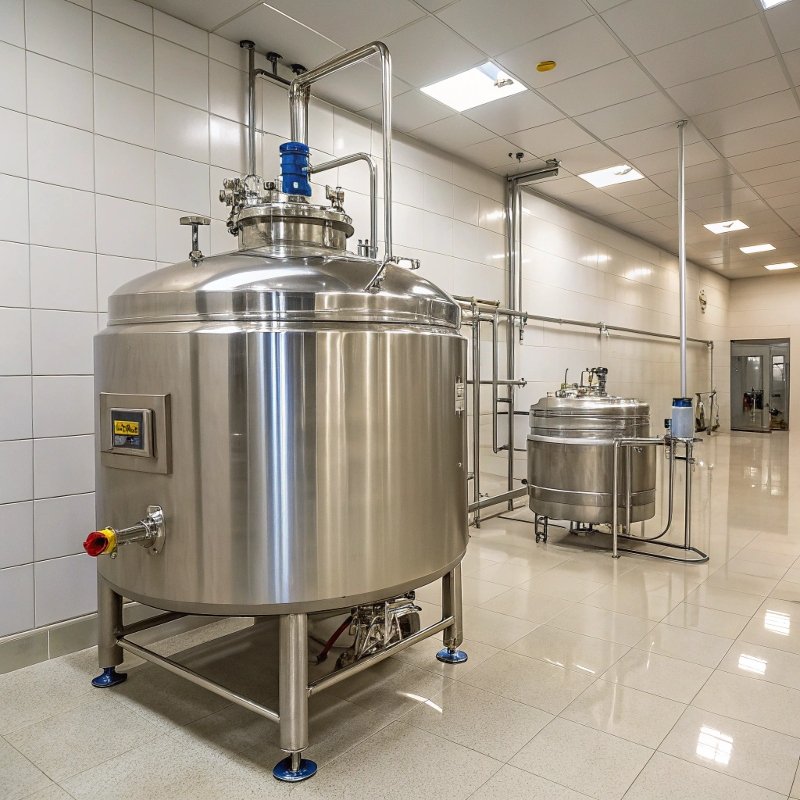
Key Properties of Food-Grade Stainless Steel
Food-grade stainless steel stands out in food processing for its unique traits that keep operations safe and efficient. It’s built to resist rust, stay clean, and last long, making it a top pick for pros. Let’s break down what makes this material so special.
Non-Porous Surface: Preventing Bacterial Growth
A non-porous surface is a big deal for food safety compliance. Unlike other metals, food-grade stainless steel doesn’t have tiny holes where bacteria can hide and grow. This keeps kitchens and factories cleaner and safer.
For businesses, this means fewer worries about contamination. Grades like 304 and 316 shine here, offering smooth surfaces that are easy to scrub down after use.
Corrosion Resistance: Withstanding Harsh Conditions
Corrosion-resistant metals like food-grade stainless steel can handle tough stuff—think acidic sauces or salty brines. Grade 316, with its molybdenum boost, fights rust even better than 304, perfect for harsh setups. This strength cuts replacement costs over time.
HnL Steel supplies these grades with traceable quality, ensuring they meet global standards. That’s a win for manufacturers needing reliable gear.
Non-Reactive Nature: Ensuring Food Purity
Food-grade stainless steel doesn’t mess with food flavors or safety. Its non-reactive nature means no chemicals leach into your meals, keeping them pure. This is key for pros aiming to deliver top-notch products.
Whether it’s a soup vat or a cutting table, this metal stays neutral under heat and moisture. It’s a practical choice that keeps quality consistent.
Durability and Low Maintenance Needs
This steel is tough as nails and doesn’t need constant upkeep. It resists dents, scratches, and wear, so equipment lasts longer—saving cash in the long run. HnL Steel’s options, like custom pipes, highlight this durability for food processing.
Low maintenance also means less downtime. For busy plants, that’s a huge perk, keeping production rolling without hassle.
“The best food-grade stainless steel for processing combines strength and safety, cutting costs while meeting strict health rules.”
These properties make it a smart investment. Suppliers like HnL Steel focus on grades 304 and 316, which balance corrosion resistance and affordability for real-world use.
Food-Grade Stainless Steel Properties Table
| Property | 304 Grade | 316 Grade | Industry Avg | Benefit |
|---|---|---|---|---|
| Surface Porosity | None | None | Low | Blocks bacteria |
| Corrosion Resistance | High | Very High | Moderate | Longer lifespan |
| Reactivity | None | None | Low | Safe for food |
| Durability (years) | 15+ | 20+ | 10-15 | Less replacement |
| Maintenance (hours/year) | 5 | 4 | 8 | Less downtime |
Note: Durability based on typical food plant conditions; maintenance reflects annual cleaning hours.
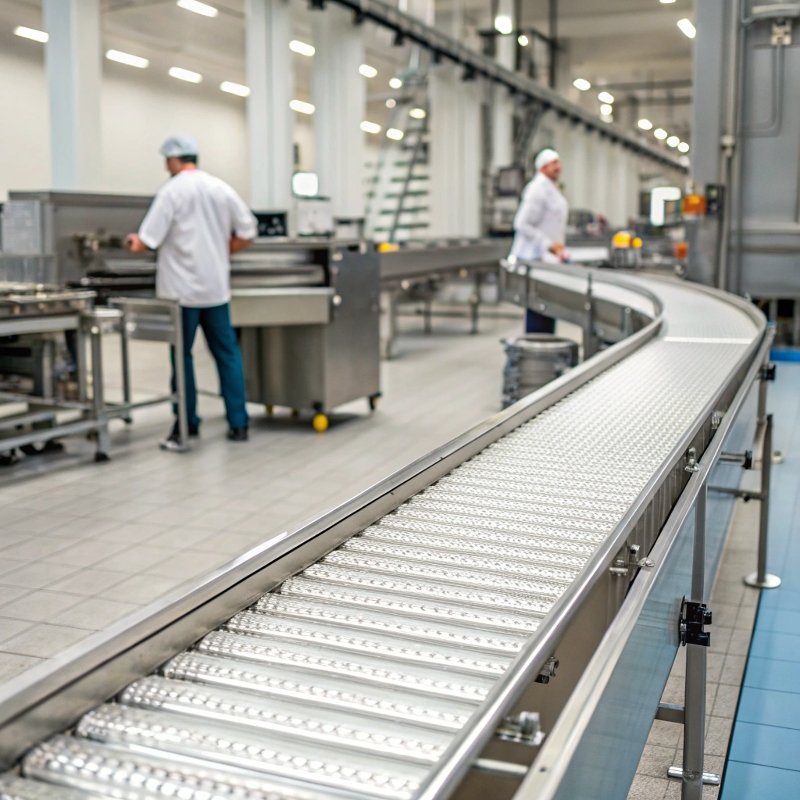
Comparing Food-Grade Stainless Steel Grades: 304 vs. 316
Food-grade stainless steel comes in different grades, with 304 and 316 being the most popular for food processing. These grades differ in strength, cost, and rust resistance, so picking the right one depends on your needs. Let’s dive into what sets them apart.
Grade 304: Versatility, Cost-Effectiveness, and Applications
304 stainless steel is the go-to for many food pros thanks to its balance of quality and price. With 18% chromium and 8% nickel, it fights rust well and works for general tasks like making utensils or storage tanks. It’s a versatile pick that doesn’t break the bank.
HnL Steel offers 304 in forms like coils and pipes, perfect for everyday food setups. It’s reliable for most jobs without needing extra bells and whistles.
Grade 316: Superior Corrosion Resistance with Molybdenum
316 stainless steel steps it up with 2% molybdenum, giving it next-level rust protection. This makes it ideal for tougher spots—like processing salty snacks or acidic juices. It’s a bit pricier but worth it where corrosion is a big risk.
From HnL Steel’s range, 316 comes in custom shapes like tubes, ensuring safety in harsh conditions. It’s the champ for long-term toughness.
When to Choose Each Grade for Food Processing
Go with 304 if you’re handling dry goods or neutral foods—it’s cost-effective and meets basic safety rules. Choose 316 when dealing with salty, acidic, or wet environments to avoid rust and keep food pure. Knowing how different grades of stainless steel differ in food processing helps you save money and stay compliant.
HnL Steel tailors both grades to your setup, whether it’s a small bakery or a big plant. Their flexibility makes choosing easy.
Other Grades: Brief Overview and Niche Uses
Beyond 304 and 316, grades like 430 and 201 pop up. 430 is cheaper but less rust-resistant, good for light-duty appliances. 201 cuts costs even more but isn’t as tough, fitting niche, low-risk uses.
For food-grade stainless steel, 304 and 316 dominate due to their safety and durability. HnL Steel sticks to these top tiers for quality you can trust.
“Picking between 304 and 316 means matching your food processing needs to the right rust resistance and cost.”
304 vs. 316 Stainless Steel Comparison
| Feature | 304 Grade | 316 Grade | 430 Grade | Industry Need |
|---|---|---|---|---|
| Chromium (%) | 18 | 16 | 16 | 16-18 |
| Nickel (%) | 8 | 10 | 0 | 8-10 |
| Molybdenum (%) | 0 | 2 | 0 | 0-2 |
| Corrosion Resistance | High | Very High | Moderate | High |
| Cost (relative) | Low | Medium | Very Low | Balanced |
Note: Higher nickel and molybdenum boost rust resistance; cost reflects typical market trends.
Ensuring Compliance with FDA and EU Standards
Food-grade stainless steel is a game-changer for meeting FDA and EU food safety rules. These regulations demand materials that keep food pure and safe, and stainless steel delivers every time. Let’s explore how it aligns with these tough standards.
Overview of FDA and EU Food Safety Regulations
The FDA in the U.S. and EU authorities set strict guidelines for materials touching food. They require non-toxic, rust-resistant metals that can handle cleaning without breaking down. Food-grade stainless steel, like grades 304 and 316, fits the bill perfectly.
Both regions push for food safety compliance to protect consumers. That means using materials that won’t leach harmful stuff into meals.
How Food-Grade Stainless Steel Meets Compliance Needs
Grades 304 and 316 shine here—304 offers solid rust resistance, while 316 adds molybdenum for extra toughness against harsh conditions. Their smooth surfaces stop bacteria from sticking, meeting hygiene rules head-on. HnL Steel provides these certified grades, ensuring they match FDA and EU specs.
This steel also handles heat and cleaning chemicals without losing its edge. It’s a reliable pick for staying on the right side of the law.
Importance of Certification and Traceability in Supply Chains
Certification isn’t just paperwork—it proves your steel is safe and legit. Traceability tracks it from factory to table, so you know it meets regulatory compliance for food-grade materials. HnL Steel offers traceable products, giving procurement teams confidence.
Without this, you’re gambling with fines or shutdowns. Certified steel keeps your operation running smoothly.
Risks of Non-Compliant Materials in Food Processing
Using the wrong materials can spell trouble—rust, contamination, or chemical leaks into food. Non-compliant metals might save a buck upfront but risk health violations and recalls later. Stick to 304 or 316 from trusted suppliers like HnL Steel to avoid these headaches.
It’s not just about rules; it’s about trust. Compliant steel keeps customers safe and your reputation solid.
“Food-grade stainless steel ensures safety and compliance, bridging strict regulations with practical food processing needs.”
Compliance Standards Comparison
| Requirement | FDA Standard | EU Standard | 304 Grade | 316 Grade |
|---|---|---|---|---|
| Non-Toxic | Yes | Yes | Yes | Yes |
| Corrosion Resistance | Moderate | High | High | Very High |
| Cleaning Tolerance | High | High | Yes | Yes |
| Traceability | Recommended | Required | Available | Available |
| Certification | Required | Required | Yes | Yes |
Note: 316’s higher corrosion resistance suits stricter EU rules; traceability ensures supply chain trust.
Sourcing and Maintaining Food-Grade Stainless Steel
Finding the right food-grade stainless steel and keeping it in top shape is key for food processing success. You need suppliers you can trust and smart upkeep habits to make it last. Here’s how to get it right.
Choosing Reliable Suppliers: What to Look For
Pick suppliers with a solid rep for quality and fast delivery. Look for certifications like FDA or NSF approval—proof their steel, like 304 or 316 grades, meets safety rules. HnL Steel stands out with traceable, corrosion-resistant metals and pro support.
Check their range too. From coils to pipes, HnL Steel offers options that fit your setup, ensuring you get the best food-grade stainless steel for processing.
Benefits of Supply Chain Traceability
Traceability means you can track your steel from factory to facility. This cuts risks of using shady materials and keeps you compliant with health regs. HnL Steel’s clear supply chain gives peace of mind for hygienic materials in food processing.
It’s also about trust. Knowing where your steel comes from builds confidence in its safety and performance.
Best Practices for Cleaning and Maintenance
Keep your steel shining with regular cleaning—use mild soap or special cleaners to avoid scratches. For 316, its molybdenum edge fights rust, but don’t slack on wiping down after salty or acidic jobs. Quick rinses keep it good-to-go for years.
Avoid harsh scrubbers that damage surfaces. Proper care extends life and keeps bacteria away.
Long-Term Cost Savings Through Smart Sourcing
Smart sourcing saves cash over time. Grades 304 and 316, though pricier upfront, outlast cheaper metals thanks to their durability. HnL Steel’s quality assurance and fast delivery mean less downtime and fewer replacements.
Investing in reliable steel cuts maintenance costs too. It’s a practical move for any food business.
“Sourcing quality food-grade stainless steel and maintaining it right keeps your operation safe and your wallet happy.”
Supplier and Maintenance Comparison
| Factor | HnL Steel | Average Supplier | 304 Grade | 316 Grade |
|---|---|---|---|---|
| Certification | FDA/EU | Varies | Yes | Yes |
| Traceability | Full | Partial | Available | Available |
| Delivery (days) | 5-10 | 15-20 | N/A | N/A |
| Durability (years) | 15-20 | 10-15 | 15+ | 20+ |
| Maintenance (hours/year) | 4-5 | 8-10 | 5 | 4 |
Note: Durability based on typical use; maintenance reflects annual cleaning time.
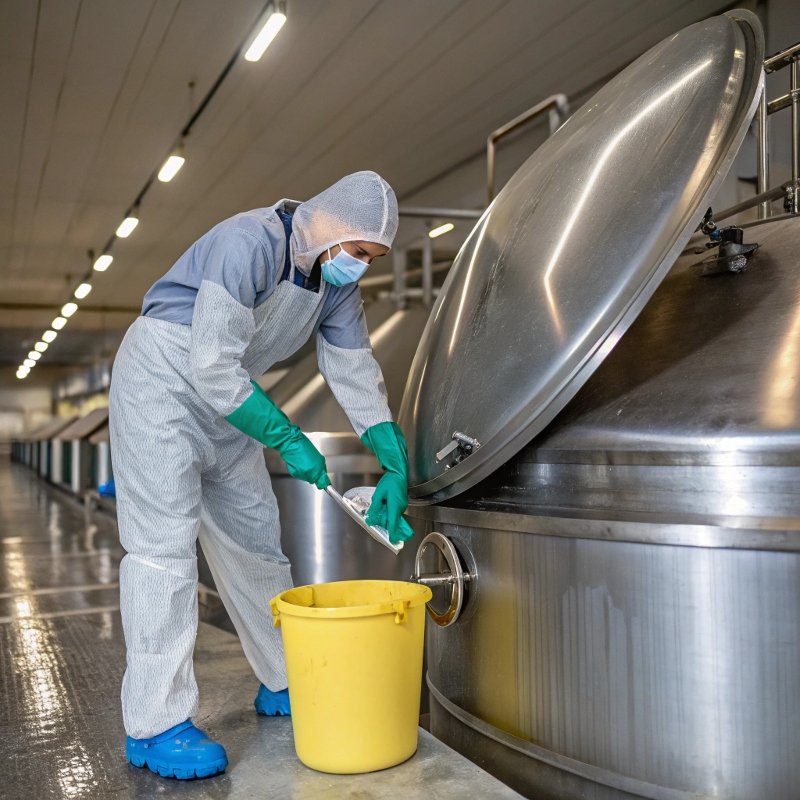
Conclusion
After a decade in the steel game, I’ve learned one thing: food safety hinges on the right materials. Food-grade stainless steel—like the 304 and 316 grades we swear by at HnL Steel—delivers hygiene and durability that pros can trust. It’s not just about meeting FDA or EU rules; it’s about keeping every bite safe and pure.
For me, it’s clear: this metal’s strength and resistance make it the backbone of food processing. You can’t beat its ability to handle tough conditions without flinching. So, if you’re serious about quality, sourcing reliable stainless steel is a no-brainer—it’s the smart move for your operation and your customers.
FAQ
Q1: What is food-grade stainless steel?
A1: Food-grade stainless steel refers to specific grades of stainless steel that meet strict hygienic and safety standards for food processing. It is designed to resist corrosion, prevent leaching, and allow for easy cleaning.
Q2: What grades of stainless steel are considered food-safe?
A2: The most common food-safe stainless steel grades are 304 and 316. They are known for their excellent corrosion resistance, non-reactivity with food, and ease of sanitation.
Q3: Why is food-grade stainless steel important in food processing?
A3: It is essential for preventing contamination, ensuring compliance with FDA and EU food safety regulations, and maintaining hygiene in food preparation and processing environments.
Q4: How do 304 and 316 stainless steel differ?
A4: 304 stainless steel is generally more affordable and suitable for most food applications, while 316 offers superior resistance to corrosion and is ideal for environments with higher exposure to acids and salts.
Q5: Is food-grade stainless steel non-toxic?
A5: Yes, food-grade stainless steel is considered safe and non-toxic for food contact, as it does not leach harmful substances into food.
Q6: What are the characteristics of food-grade stainless steel?
A6: Food-grade stainless steel is non-reactive, corrosion-resistant, durable, and has a smooth surface that is easy to clean, making it ideal for food processing equipment.
Q7: Do all stainless steel types qualify as food-grade?
A7: No, not all stainless steels are food-grade. Only specific grades, such as 304 and 316, designed and manufactured to meet food safety standards qualify.
Q8: How can I ensure my stainless steel is food-grade?
A8: To ensure stainless steel is food-grade, check for certifications that confirm compliance with FDA and EU standards and ensure it is marked as safe for food contact.
External Links
- Food Grade Stainless Steel: Understanding Different Grades and Uses
- Food Grade Stainless Steel Selection Guide – AAA Metals Company Inc
- Food Grade Stainless Steel in Food and Beverage Processing
- Best Food-Grade Stainless Steel: Which Grades Are Best?
- All you ever need to know about food grade stainless steel
- 304 Stainless Steel vs Food Grade Stainless Steel – Topson Metal
- Marine Grade vs. Food Grade Stainless Steel: Key Differences
- What Is Food Grade Stainless Steel? Is It Safe? – KitchenSanity


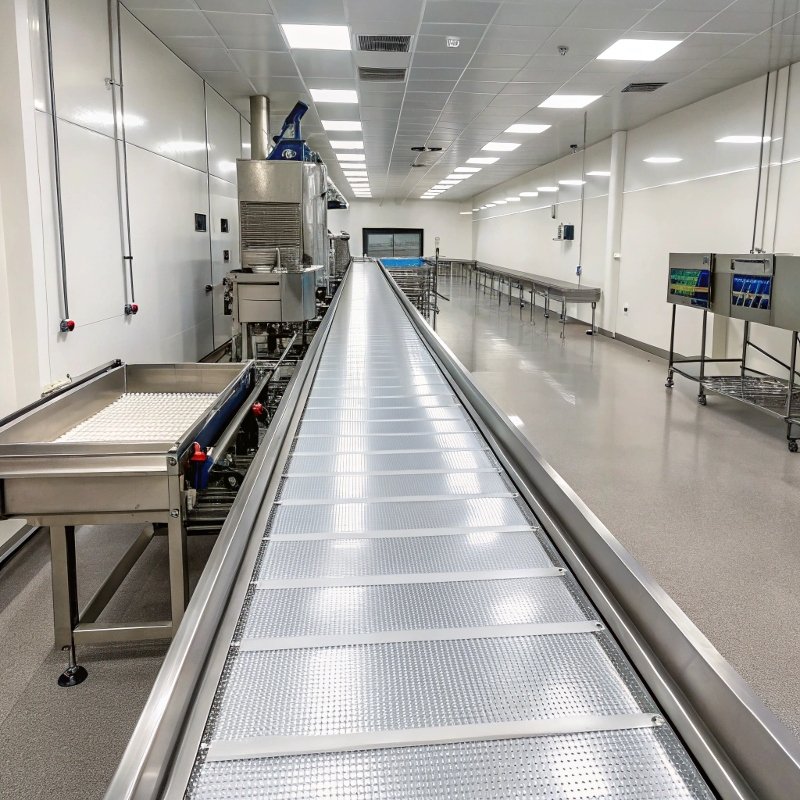

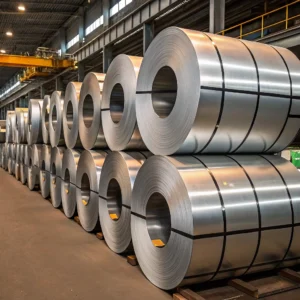
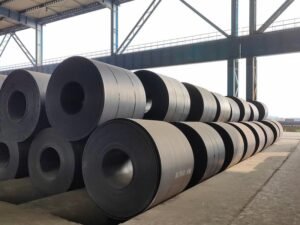
2 Responses